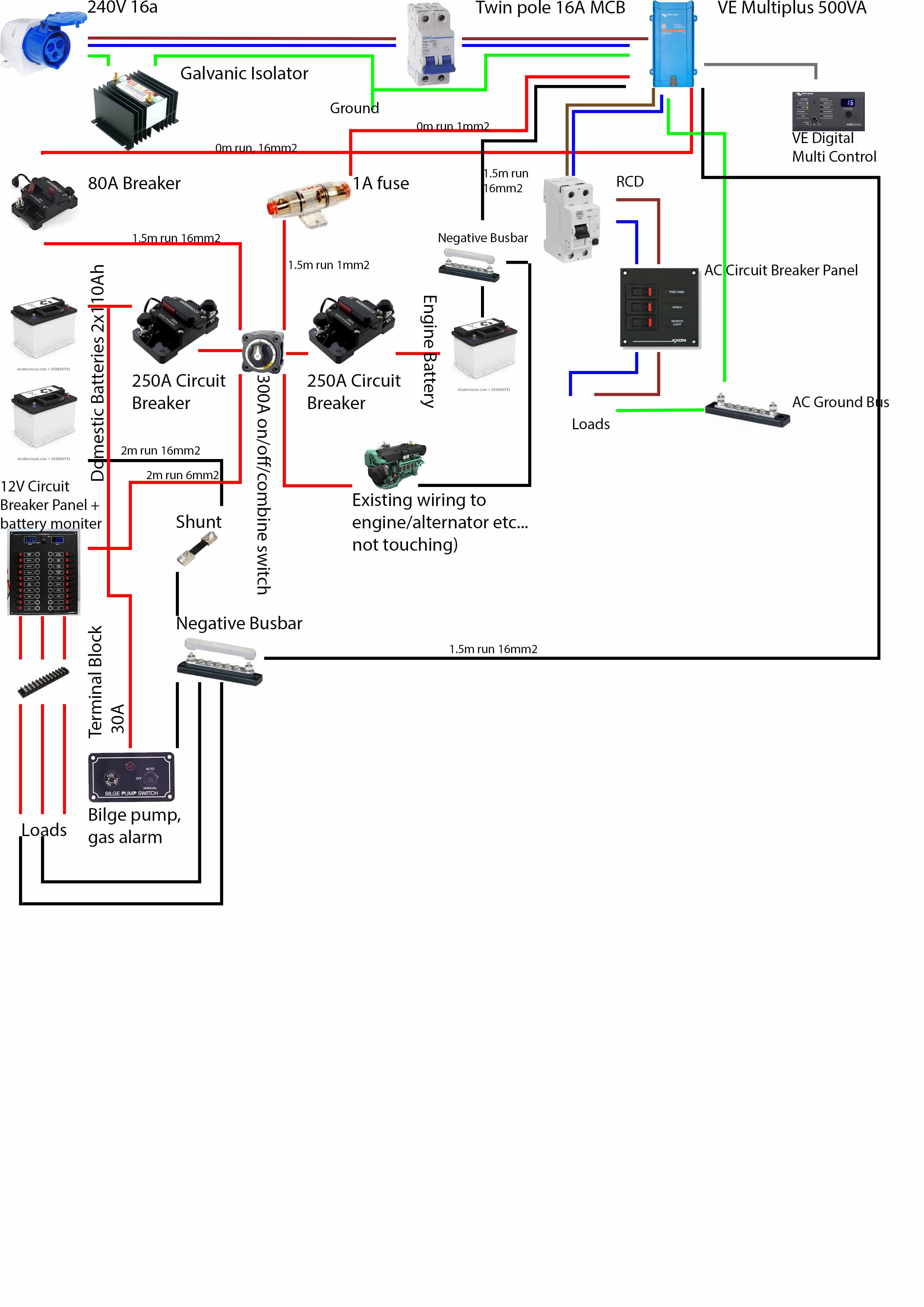Hi all,
I have found some previous threads from here very useful and knocked up a wiring diagram last night to fit my new Multiplus 12/500/20 which I was hoping someone of superiour knowledge might be kind enough to scan over.
Most of the kit in this diagram is already aboard but I want to move a few bits around (e.g. RCD is in an ugly place and want to add the AC circuit breaker panel next to the DC one).
I am not an electrician but have had to undertake many repairs on electrical equipment at sea or in remote places on a variety of vessels (never my own) so hopefully I am not too far off the mark. But please show me where the gaps in my knowledge are and where I need to read up.

Cheers,
